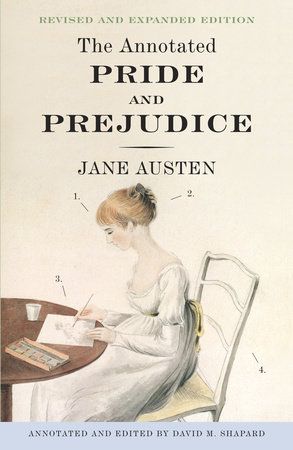Pride And Prejudice
Jun 19, 2019 • 187 views

The introduction of Jane Austen’s novel 'Pride and Prejudice' is written by B. Mangalam.
● Isobel Armstrong in her Introduction to the Oxford edition of Pride & Prejudice (1990) points out how 'Pride' and 'Prejudice' resonates the philosophical suggestions of Hume's work. The original title 'First Impressions' (1796 -97) pointing towards 'subjective, individual experience' is revised by 1813 as 'Pride and Prejudice' that places the emphasis on 'abstract, public and social qualities'. She notes 'the change of title perhaps registers a new historical situation' and indicates that 'the text' is marked, even scarred, by history.
● The only reference to British contact with India in Pride and Prejudice is a reference to the famous Indian fabric exported from its soil- muslin - which was highly cherished by fashionable,rich gentry women.
● In other words, Austen is not aware of colonial trade practices but her use of such knowledge is restricted to indicate its impact on the everyday existence of women of a particular class.
● Sandra Gilbert and Susan Gubar in The Madwoman in the Attic (1979) held that Austen's fiction dramatizes 'the necessity of female submission for female survival' while placing Austen as a conservative patriarchal writer. Gilbert and Gubar foregrounded the strategies of resistance employed by her women characters before they are made to submit to patriarchal repression.
● Margaret Kirkham in Jane Austen, Feminism and Fiction (1983) places Austen's novels in the context of eighteenth-century feminist ideas and of the feminist controversy at the turn of the eighteenth century. She sees a 'striking similarity of viewpoint' on female education, marriage, and representation of women in the writings of Mary Wollstone craft and Jane Austen.
● Jane Austen represents the psychological behavior of mother as Mrs. Bennett scolded her children without any reason, she is angry with something else. In the same way, in the play "The Glass Menagerie" also shows us the mother figure 'Amanda' who is stressed for her kids and the society of America at that time.
● Judith Lowder Newton in her persuasive book, Women, Power and Subversion: Social Strategies in British Fiction (1981) points out that as the fantasy represents women as intelligent, witty and well aware, the patriarchal ideas of women as passive, incompetent dependents are subverted. Subversion through fantasy or empowerment through fantasy is liberating although it is politically conservative.
Gender and genre: Pride and Prejudice, 'A novel by a lady'
Shampa Roy highlights that 'Pride and Prejudice' can be read like a novel written in a style very different from that of the sentimental genre and containing a fine understanding of feminine identity, romantic desire and gender relations as shaped by the social context.
The Jane-Bingley relationship is represented in a way that indicates romantic love as having less to do with intensely private desires and more with the pressure of social conventions and expectations.
Austen's novel constitutes a witty, mocking, sharply critical narratorial voice and represents the business of love and marriage as embedded in social and material practices.
Within a single sentence, the narrator manages to fuse two viewpoints- the social one and the ironic narratorial one. The consciousness of the narrator obviously does not share a belief in this 'Universally acknowledged truth' and is indeed mocking such a social view.
